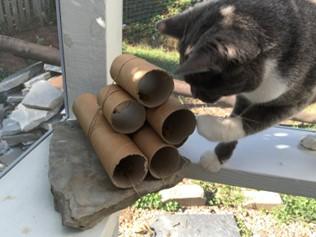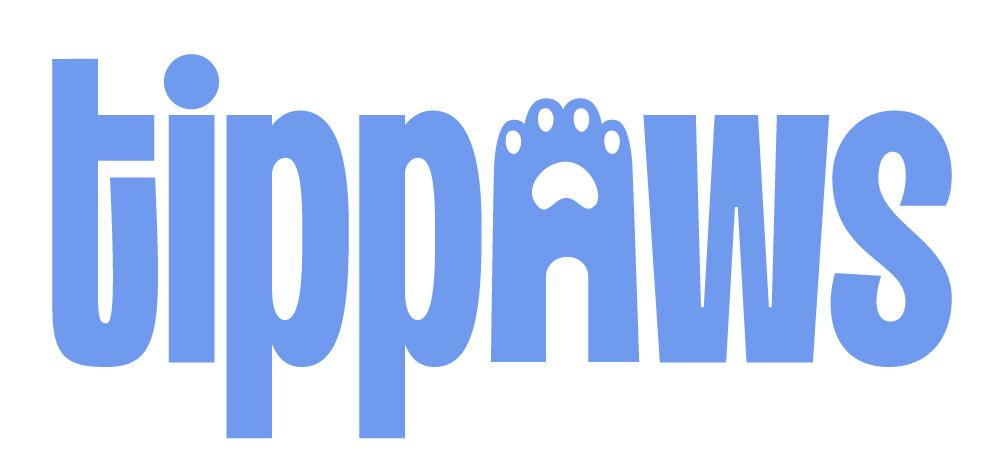By Francesca Lees BSc (Hons) NCert ( AnBeh) ISFM CertFN RVN
When it comes to feeding our cats we are all very conscious of what we are feeding them, how much we are feeding and can often be found checking packets and looking at ingredients lists. We have become very conscious of what’s in our cats food and with pet obesity on the rise (according to a survey taken at London Vet Show 77% of vets believed that obesity has increased and that 43% of cats are overweight or obese) owners are more conscious than ever about making sure their cat is eating the healthiest diet.
But, aside from what we are feeding them, how often do we think about HOW we are feeding our cats? For example,
- Do you feed your cat from a bowl?
- Do you put all their food in their bowl in one go?
- Do you put small amounts in their bowl and top it up throughout the day?
- Maybe your cat has two bowls and you put some food in each and spread them out in different rooms?
- Do you use a plate or a bowl? Or perhaps a puzzle feeder?
Everybody has their own way of feeding their cat, however it usually comes down to convenience.
In this article we are going to look at how the wild ancestors of our domestic cats (Felis Silvestris) behave in terms of hunting and eating and we are going to look at how we can replicate some of these more natural feeding behaviours in our own homes with our domestic cats. Doing so can help prevent behaviour issues, stop your cat from becoming bored and it can help prevent obesity.
How did cats eat historically?
Did you know that in the wild cats are naturally grazers? This means they prefer to eat little and often and don’t usually eat a large meal in one go. They will generally, over the course of the day, catch and eat around 10 small mammals. This is very unlike how we feed our domestic cats, placing a whole bowl of food down in one go!
These days domestic cats don’t have to hunt for food and so are not exhibiting natural cat hunting and feeding behaviours. This can lead to frustration. This is particularly prevalent in indoor cats who have no access to the outside and so are unable to hunt.
How should we feed our cats?
Firstly, ditch the bowl! There are so many studies now which show that feeding cats from other objects other than a bowl can have a positive impact on their mental and behavioural wellbeing. Feeding cats from a bowl does not reflect the way cats naturally eat and it doesn’t promote the physical and mental health of the cat.
Just because a cat has been fed, it doesn’t mean that their predatory behaviour has been satiated. This is why if you have an indoor cat you may find they attack your feet when you walk past or attack you under the duvet when you’re in bed. Even though cats are fed they still have an innate desire to hunt, which is why, if they’re not given the chance to hunt, they will hunt you or another cat in your household instead.
Use cat puzzle feeders throughout the day
There are lots of ways we can feed our cats without putting food in a bowl. There are many puzzle feeders now available on the market for cats and these can easily be purchased from pet shops or online pet stores. You can portion out their daily allowance of dry food and then spread it between the different puzzle feeders.
There are many different types of puzzle feeders available – there are wobbler toys in which your cat has to bat the toy around and then food drops out of it, there are puzzle toys which involve your cat having to “fish” out their food from large plastic tubes and there’s also a product called the ‘no bowl food system’ which comes with a pack of little plastic mice which you fill with food and hide around the house.

Why are puzzle feeders good for your cat?
Using puzzle feeders makes your cat have to think about how to get their food and replicates the way cats use their brains when it comes to catching prey.
If your cat has to ‘hunt’ for its food it will be less prone to boredom. Having to work for their food can also make them move more and this can help to prevent them becoming overweight.
DIY puzzle feeders for cats
You can also make your own puzzle feeders using household items. A fantastic puzzle feeder can be made using an empty ice cube tray. Just put a handful of dry food spread out in all the sections of an ice cube tray and watch your cat have to work to get all of the bits out! You can also use an empty egg box in the same way.

Toilet roll tubes can also be really useful in creating a puzzle feeder game. Collect a few toilet roll tubes over time and then try hiding dry food in all of the tubes. Then place these tubes around the house in different locations. Watch how your cat has to walk around the house ‘hunting’ the toilet roll tubes and then batting them and kicking them to get the food out. You can even make it harder by taping some paper over both ends of the tube and then cutting a little hole in the middle of the tube for the food to drop out if they roll it or kick it around. Using an old wine bottle carrier is also a great DIY puzzle feeder – just drop some dry food into the sections in the wine box and watch your cat try to get the food out!

For more puzzle feeding ideas you can check out foodpuzzlesforcats.com. There are loads of great DIY puzzle ideas on there.
Snuffle mats for cats
Another great way of making your cat have to ‘work’ for their food is using a snuffle mat. Snuffle mats are made of little pieces of fabric which act as little flaps which you can hide bits of food in. You can either create your own snuffle mat using bits of old clothing or cloths or you can buy one. There are also catnip snuffle mats for extra stimulation.

How often should I feed my cat?
Try to feed your cat little and often. This mimics their natural way of eating. A good way of doing this is to measure out their food for the day and spread into around 10 small meals. Don’t worry if you have to go to work, you can leave the food spread out around the house in puzzle feeders or, as previously mentioned, toilet roll tubes and then whilst you’re out they have to spend time ‘hunting ‘ for all their little meals.
Feeding your cat in this way provides a more enriched way of living and helps them to feel more like a cat. Cats are not small dogs and so feeding them in the same way as dogs is not mimicking their natural feeding behaviours.
How else can I help satiate my cat’s desire to hunt?
Remember to also play with your cat using fishing rod type toys or toys that your cat can ‘hunt’. Having an outlet for cats to exhibit their innate need to stalk and hunt and pounce will reduce their desire to pounce on you or your family members. This is particularly important for indoor cats.
Also feeding your cat a diet with a higher meat content (such as Tippaws) alongside playing predatory type games with your cat every day has been shown to reduce hunting behaviours in cats with outdoor access and can reduce the number of wild animals they catch and bring home.
Enriching your cats life with feeding opportunities that are more closely linked to their wild counterparts such as providing them with opportunities to ‘hunt’ things around the house, work for their food, play more predatory type games and they eat a diet high in animal protein could mean you are less likely to see problem behaviours and less likely to receive unwanted gifts on the doorstep!
For more information on puzzle feeders and how to introduce your cat to a new puzzle feeder check out International Cat Care’s website.
If you’d like advice on food enrichment for your cat or general advice on cat behaviour and wellness, contact Francesca through the Wild Cats Feline Behaviour website.
Subscribe to our newsletter to get 10% off your first order.

